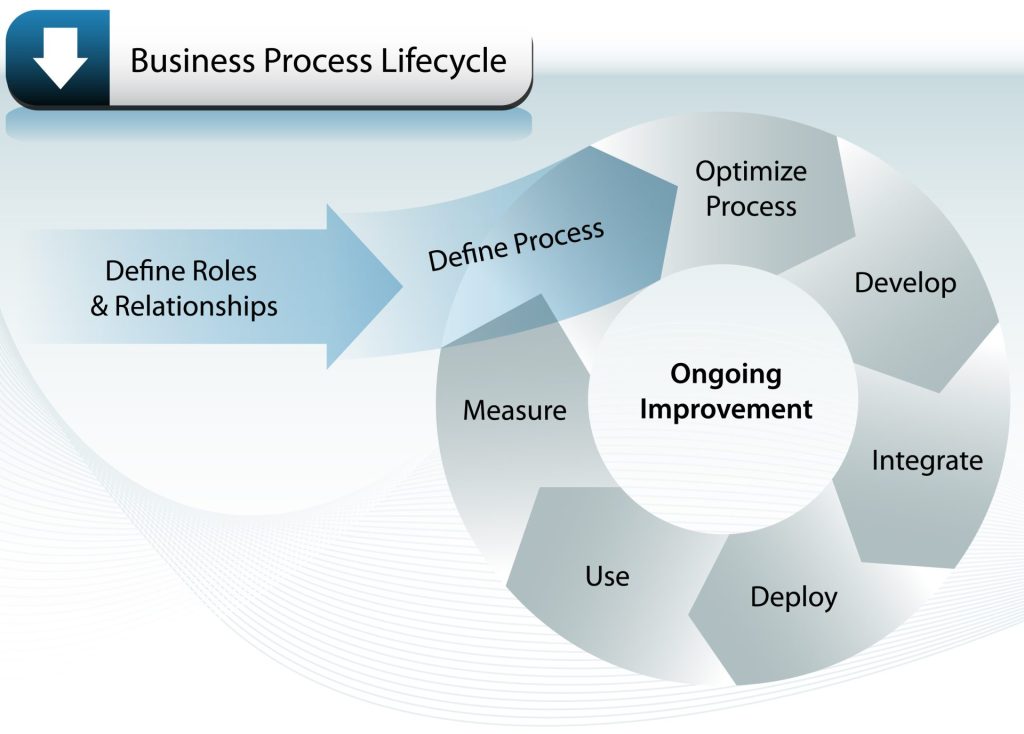What is TRIZ?
TRIZ is a continuous improvement and quality management tool, designed to help organizations learn from past incidents and preventively address potential issues.
TRIZ stands for “Theory of Inventive Problem Solving” (translated from Russian). It’s a problem-solving methodology developed and made popular in the 1950’s by Russian scientist Genrich Altshuller who studied 200,000 inventions while working in a patent office. His methodology offers a framework to innovate or problem-solve by recognizing common patterns in problems and finding solutions for them. The method has been adapted to business and manufacturing models and can be combined with other continuous improvement tools such as Lean and Six Sigma as well as the risk management tool FMEA.
CAPA and Root Cause Analysis Methods
We have blogged about CAPA before (see reference section) in the context of achieving SQF certification. CAPA stands for “Corrective and Preventive Action.” It is a mandatory system element of the Safe Quality Food Code, Food Manufacturing. It’s also a step-by-step approach used by companies to identify, investigate, and address issues (also called “non-conformities” or “deviations from requirements” in processes, products, or services. The goal of CAPA is to correct the underlying cause or causes of a process or product deviation. CAPA requires the correct identification of the root cause of a problem in order to correct it. Common Root Cause Analysis (RCA) tools include brainstorming, the 5 Whys and Fishbone Diagram methods. Once the root cause is identified, CAPA teams must select the most appropriate Corrective Actions (CA) to fix the problem and prevent its recurrence.
TRIZ Principles
TRIZ provides a systematic and guided approach to problem-solving and can be used in addition to the 5 Whys and Fishbone Diagram tools. It analyzes problems referred to as “contradictions” within a system or product and resolves them by applying engineering parameters and inventive principles. The methodology assumes that solutions already exist for most problems. As a result, it offers a toolkit of methods and guides to help quality and business professionals find the right solutions to problems quickly by leveraging team knowledge and scientific and business principles.
Key concepts and tools in TRIZ include the Nine Window management tool, the 39 engineering parameters and the 40 inventive principles originally published in the Innovation Algorithm (Altshuller,1999). TRIZ can be applied to the service and manufacturing sector as well as in business.

TRIZ nine windows
The nine window visual tool in TRIZ helps deconstruct a problem by looking at it through a combination of space, time, condition and parts vs whole system variables. These are important to solve contradictions that impact process and product performance and efficiencies. Contradictions (our pain points or problems) in manufacturing or business often occur because we try to maximise critical parameters (for instance, we want to increase yield and the speed of a process) but we must to do it by minimizing defects (accuracy of transactions, product quality). In other words, an attempt to improve one design or process element undermines another. The first TRIZ concept your team will need to work on is completing the nine windows table by using the four separation principles. This exercise helps break the “psychological inertia” (or innovation “blocks”) by leveraging the team’s knowledge and experience.
Examples of “Space separation” actions: Offering workers the option of working onsite or remotely during a shift, using automation, establishing contingency plans to manage risks.
Examples of “Time separation” actions: allocating a specific amount of resources based on needs at different stages of a project, using automation, using digitized forms, establishing contingency plans to manage risks.
Separation based on conditions: screening of information, adding a filtration step or metal detection step in a process, auditing a process to validate the accuracy of the need (decreasing mistakes), establishing rules to enable a process change.
Separation between system parts and the whole system: Making a large organization manageable through small business units (easy flow of information), asking a supplier to take on parts of the process.
The problem-solving table comes in the form of a matrix which is organised around time (Past, Present and Future) as well as System/Product, Sub-System (Components) and the Supersystem (System or Product within its Environment). CAPA Teams are asked to consider the existing Faulty Process or Product at the present time (What is the problem? What are the parts of the process/product which are at stake? How does the product/process interact within its environment?). Past columns describe the initial design of the process or product, where the process needs originate from and are they are resourced. Future columns summarise the desired outcomes for all three levels of the System/Product. An example is presented below which addresses a faulty food label application process. Teams must start by filling out the center of the table (See Present System window) and work their way through the remaining eight windows.
| Past | Present | Future | |
| System or product within its operating environment | Thinking about process design, where is the need coming from?
Need to issue the production schedule based on an inaccurate forecast. Need to alter the schedule frequently based on sudden increases in customer orders. |
Describe the process within the external environment: Scheduling department issues the production schedule (including schedule changes) and warehousing department delivers the labels to the packaging line. Production assigns trained workers to the packaging line. | What is the desired business outcome? Avoiding loss of key accounts, lower margin, customer complaints and recalls/regulatory action. |
| System or product | Analyse the previous step in the process design to confirm the need: The right number of correct labels must be brought over to the production line at the beginning of the shift. | Describe your faulty system or product first and ask the team to complete the table:
Wrong food labels applied to product. |
What is a positive process improvement? Less time spent investigating recalls of the mislabeled product. Cost savings due to fewer holds, fewer hours spent re-labeling product. |
| Components or parts of system or product | Analyse the components to fulfill the need: Warehousing must review the production schedule to bring the right number of inspected labels to the line on time. Line operators must receive training. | Enter the components or parts of the product/system: Line Operators have access to the production schedule, label inventory (qty, packaging format). Lead time to access the labels, boxes of labels can be co-mingled. | What is the desired outcome on parts/components of the product or process? Reducing mis-labeled product inventory, eliminating the need to re-issue the production schedule, decreasing overtime, decreasing the need to re-order food labels. |
Upon reviewing the above Nine Window table, we infer that this process is critical for the business. Possible corrective actions include reducing the number of production schedule changes, implementing a bar code scanner on the line, including a verification step at startup to ensure that the right number and type of inspected labels are delivered to the line as per the schedule and providing sufficient time for line operators to complete quality checks. The 40 TRIZ Principles can be used by CAPA teams to generate more solutions and prioritize the ones that will have the most impact.
40 TRIZ Principles
The 40 TRIZ Principles include a list of technical solutions that were used in the past to innovate. While these principles were based on past innovations and patents, they have been adapted to business and manufacturing problems and translated using “lean” business terminology (refer to the ASQ ebook and the published articles below for an interpretation of each principle). A few of the TRIZ principles are shown below:
- Segmentation and fragmentation (adding more steps to a process, offering different products to customers based on needs).
- Taking out/ Extraction (streamlining, making the process simpler and more uniform)
- Local quality (targeted approach to fit a specific environment or purpose, value added product, seasonal services)
- Asymmetry (changing shapes, quantity)
- Merging (processes, locations)
- Universality (one-stop shop, product does it all)
- Nested doll concept (optimization of processes or products)
- Anti-weight or counterweight (invest in marketing when the market is slow)
- Prior counteraction or preliminary anti-action (mitigation strategies, what-if analysis)
- Prior action or preliminary action (mock audits, drills, rehearsals)
- Other way around or inversion (hire workers during a recession, make product to order).
- Blessing in disguise or harm to benefit (transform weakness into strength such as using customer complaints or near-miss events to drive process improvements)
- Intermediary or mediator (hire a consultant, sub-contract cleaning services)
- Self Service (redesign the process by recycling)
The full list of inventive principles can be found here.
The next step is for the CAPA team to brainstorm and apply the best inventive principles to the 9 Window Table. Teams must review the definition of each principle and identify possible process improvement or corrective actions.
Applications of the TRIZ methodology are fairly new and have been applied to product design, food process design and the business service sector.
Let’s review these 3 examples:
The researchers who were tasked with designing a new food packaging for elderly consumers selected principles 1 (segmentation) and 22 (blessing and disguise) from the 40 inventive TRIZ principles. The researchers had to redesign a pouch which would be rigid, easy to open with minimal strength and easy to pour from. However, if the material is strengthened, the contradiction would mean a change in package shape and loss of commercial value. According to the article, the container was divided into parts with and without contents. A device that collects the overflow when drinking was positioned just under the opening. The researchers conclude that the new pouch design is “not only elderly-friendly but also increases convenience in food use, regardless of age, gender, or disability.”
The food manufacturing design example highlights innovation in the baking industry. Fur TRIZ principles were addressed including parameter change, mechanism substitution, porous materials and composite materials. These principles lead to a discussion on changes in bread specifications as well as ensuring adequate operator training to recognise product quality at various stages in the process.
The business case example deals with quality of medical care delivered at a public hospital. Tables 5 and 6 shown in the publication identify 12 inventive principles and corresponding tangible improvement solutions. For instance, “self-service” is rated highest followed by “the other way around” and “intermediary/mediator”. Solutions include investing in automatic door opening and closing systems and providing services such as an ATM and vending machines in the hospital, asking physicians to come to a center for medical advice instead of transferring patients outside of the center for advice.
References
Key Tips to improve SQF Audit Scores with CAPA
Improving your SQF system using Corrective Action-Preventive Action (CAPA)
TRIZ e-book (ASQ) by Sunil Kumar V. Kaushik





